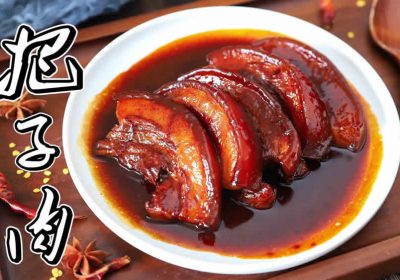Zhejiang cuisine (浙菜 zhè cài), celebrated for its seasonal ingredients and lyrical presentation, captures the essence of Jiangnan’s waterways and mountains. From Hangzhou’s imperial delicacies to Ningbo’s seafood treasures, here are 10 dishes that embody Zhejiang’s harmony of simplicity and sophistication.
1. Dongpo Pork (东坡肉 dōng pō ròu)
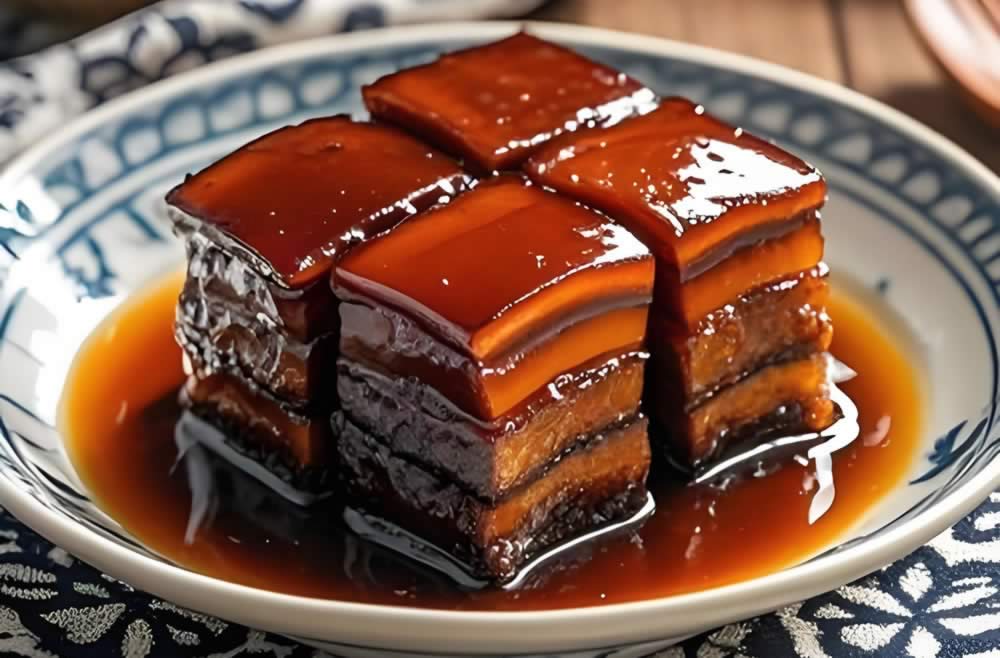
Origin: Hangzhou, Song Dynasty
Cultural Legend: Named after poet Su Dongpo, who stewed pork in soy sauce and rice wine for laborers.
Signature: Cubes of pork belly braised until glossy, with layers of fat melting like honey.
2. West Lake Vinegar Fish (西湖醋鱼 xī hú cù yú)
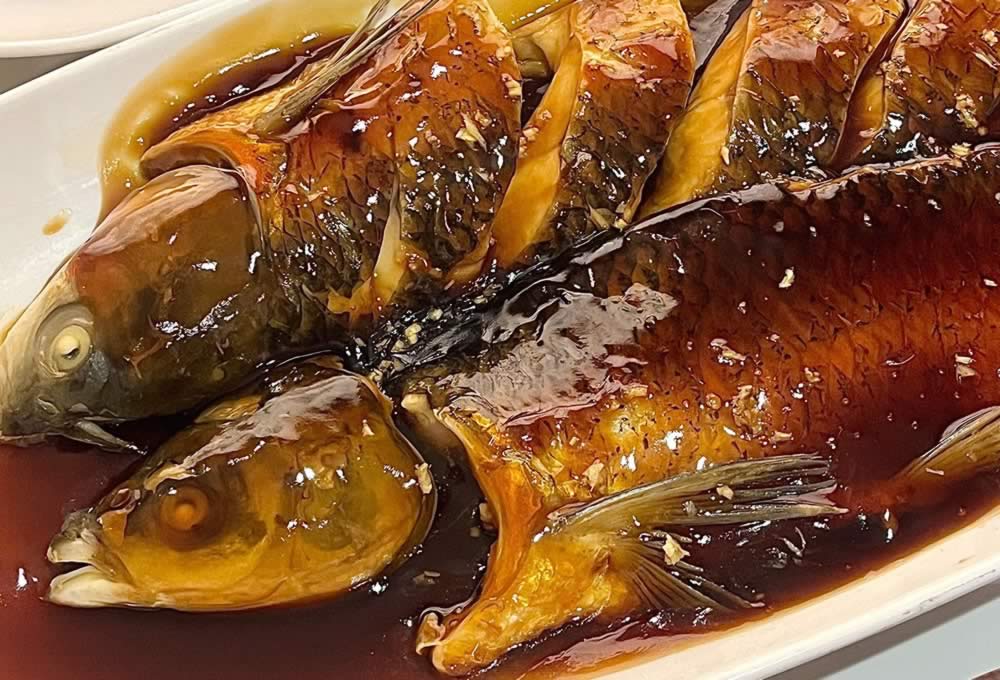
Hangzhou’s Icon: Fresh grass carp poached in water from West Lake, dressed in a sweet-sour Zhenjiang vinegar glaze.
Artistic Touch: The fish is served curled like a lotus leaf floating on the lake.
3. Longjing Tea Shrimp (龙井虾仁 lóng jǐng xiā rén)
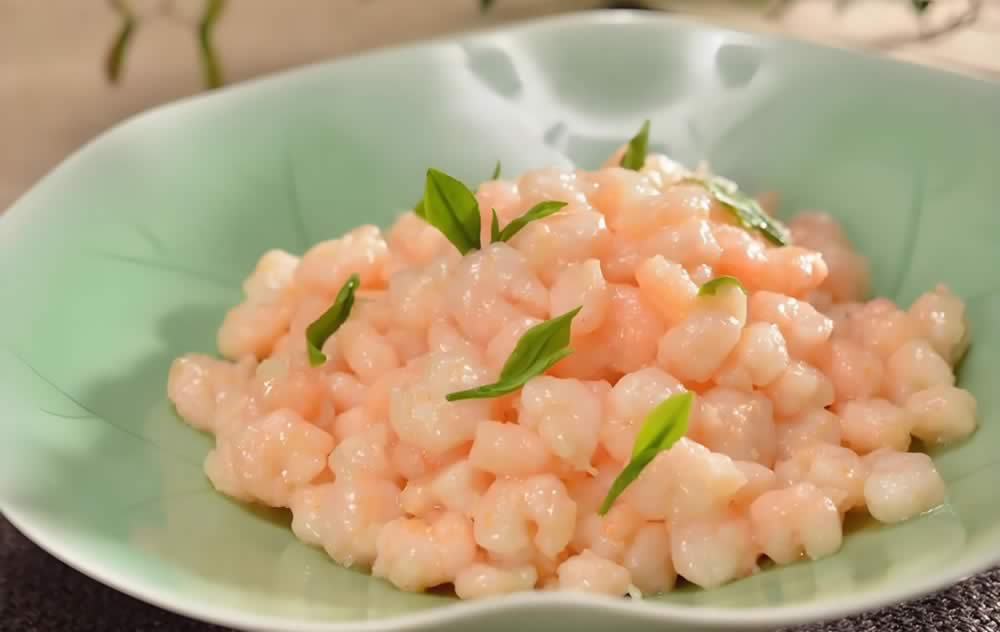
Tea & Freshness Fusion: Tender river shrimp stir-fried with Longjing tea leaves, harvested before Qingming Festival.
Imperial Roots: Said to impress Emperor Qianlong during his incognito travels.
4. Beggar’s Chicken (叫花鸡 jiào huā jī)
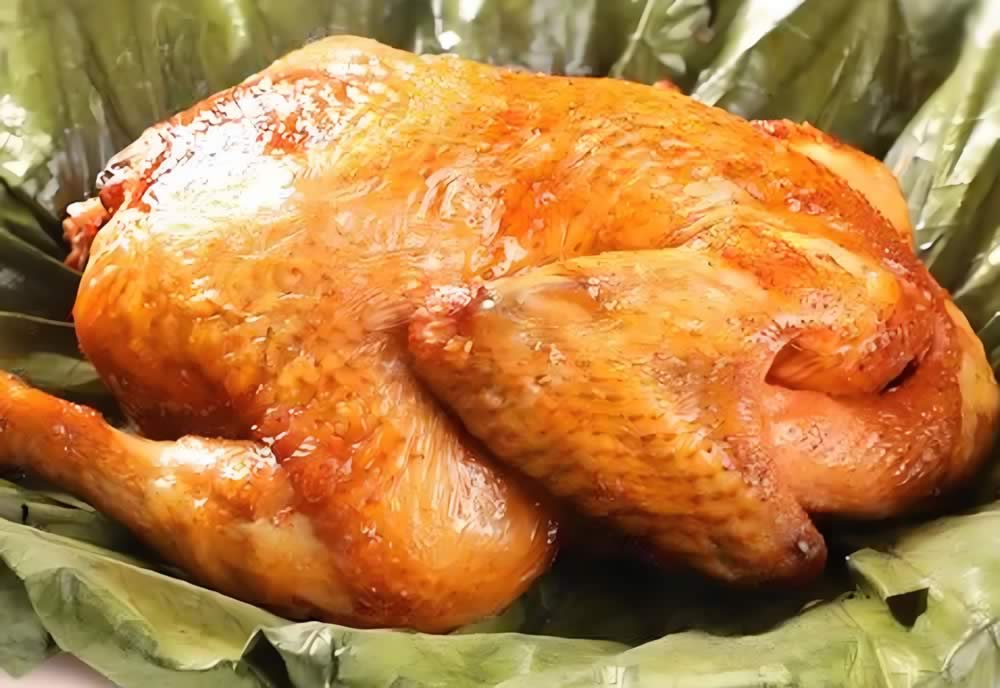
Folklore Feast: Whole chicken stuffed with mushrooms, wrapped in lotus leaves and clay, then baked.
Rustic Charm: Crack open the clay to release an earthy aroma—a dish born from Ming Dynasty beggars’ ingenuity.
5. Ningbo Fermented Rice Dumplings (宁波汤圆 níng bō tāng yuán)
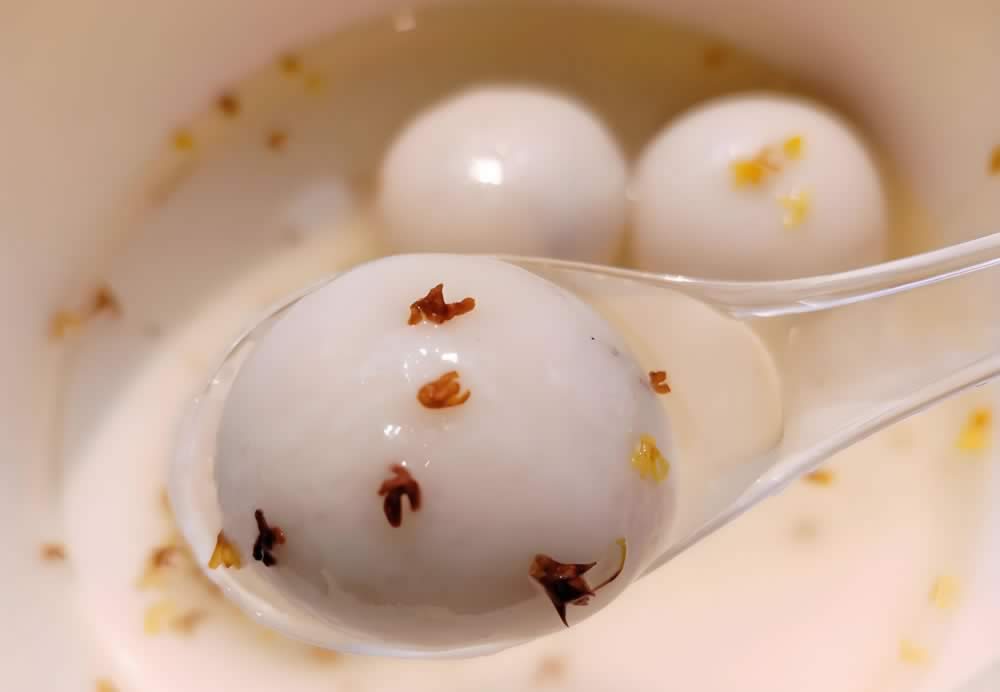
Sweet Comfort: Glutinous rice balls filled with black sesame and lard, served in fermented rice wine broth.
Symbolism: Eaten during Lunar New Year for family unity (汤圆 tāng yuán sounds like “togetherness”).
6. Shaoxing Stinky Tofu (绍兴臭豆腐 shào xīng chòu dòu fu)
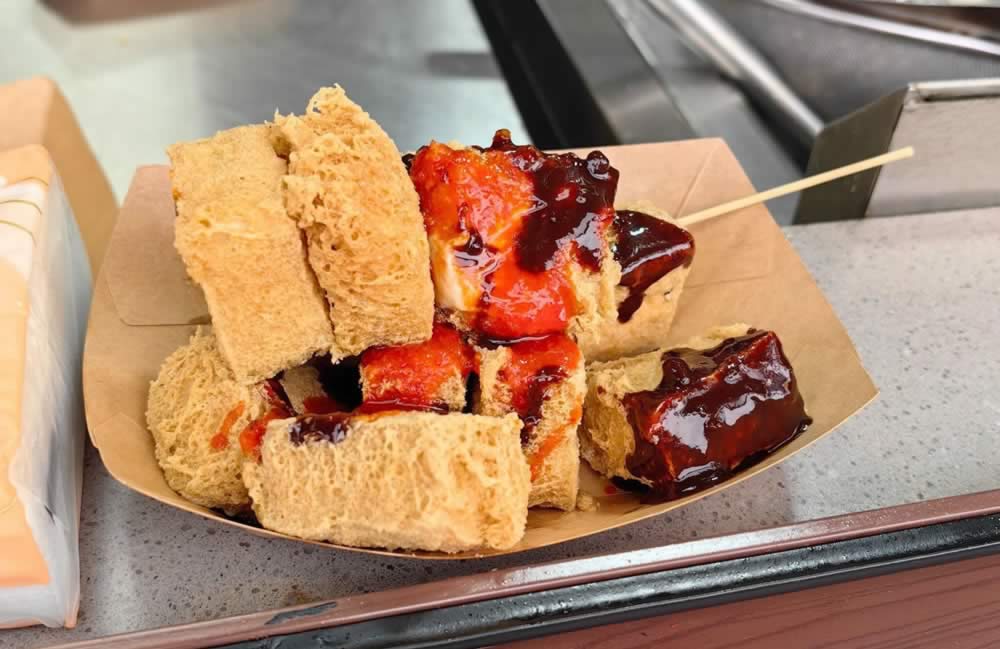
Aromatic Rebellion: Tofu fermented in Shaoxing wine lees, deep-fried to crispy perfection.
Local Saying: “闻着臭,吃着香” (smells stinky, tastes divine).
7. Braised Bamboo Shoots with Soy Sauce (油焖春笋 yóu mèn chūn sǔn)
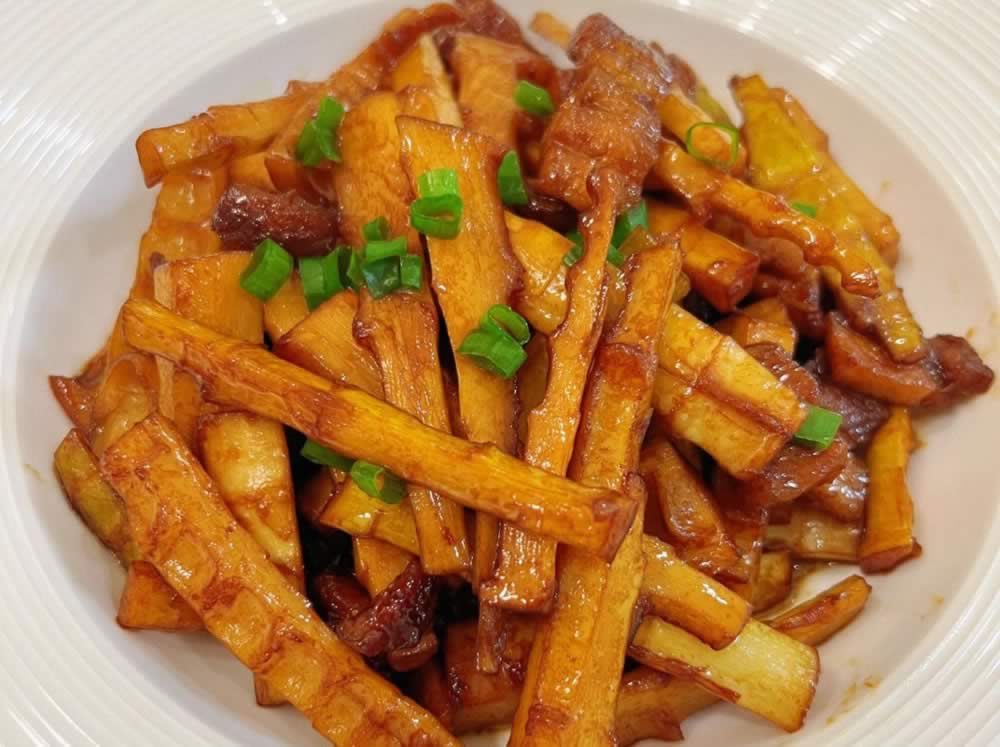
Spring’s Gift: Tender bamboo shoots stir-fried with soy sauce and sugar, highlighting Zhejiang’s mountainous terroir.
Haute Rusticity: A humble dish elevated to banquets by its caramelized umami.
8. Hangzhou Cat’s Ear Noodles (猫耳朵 māo ěr duo)
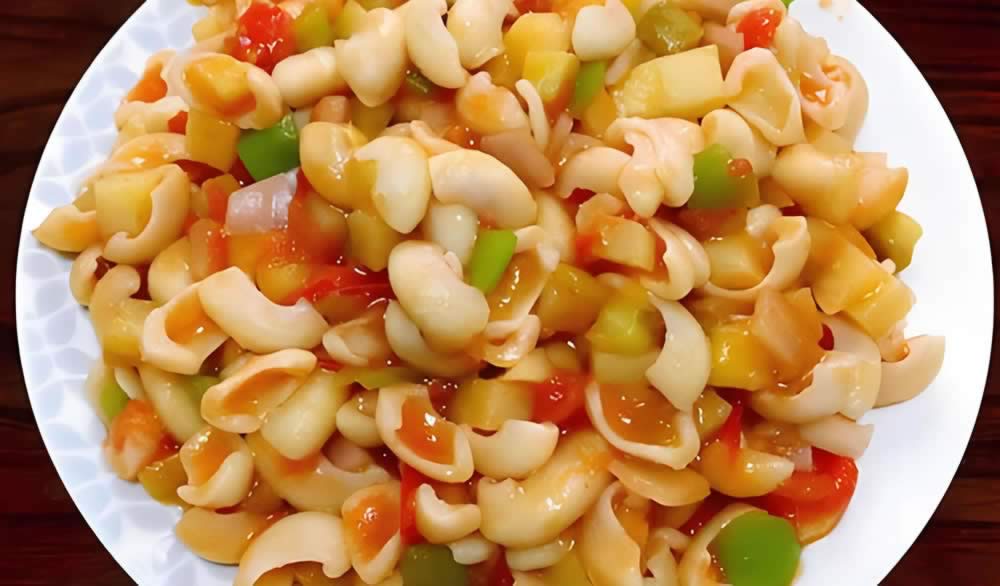
Whimsical Shapes: Hand-pinched wheat dough resembling cat ears, tossed with shrimp, ham, and bamboo shoots.
Nostalgic Bite: A street snack turned culinary emblem of Hangzhou’s creativity.
9. Steamed Pork with Lotus Leaf (荷叶粉蒸肉 hé yè fěn zhēng ròu)
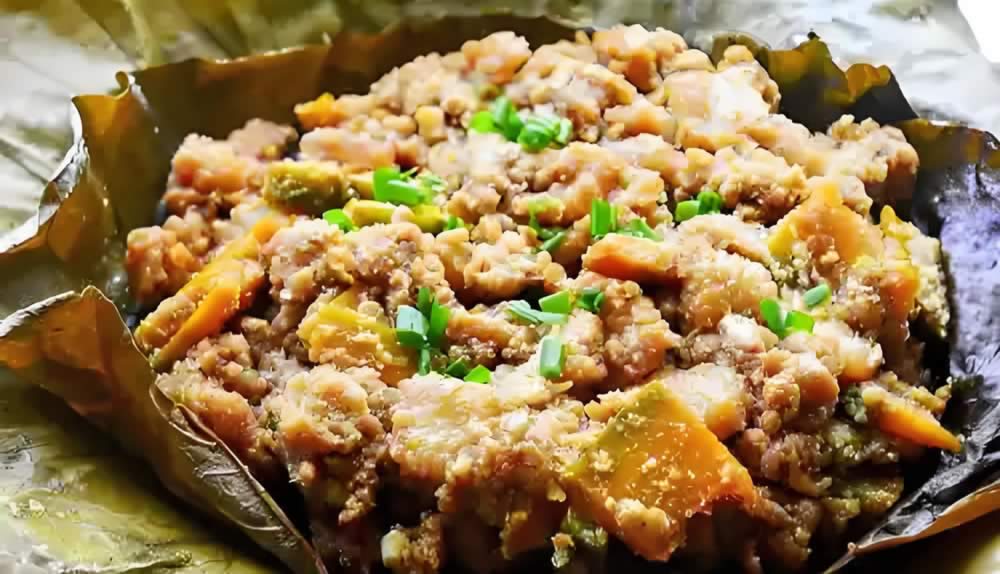
Summer Delight: Pork belly coated in rice flour, wrapped in lotus leaves, and steamed to fragrant tenderness.
Poetic Essence: The lotus leaf infuses the meat with a subtle herbal freshness.
10. Sweet Osmanthus Rice Cake (桂花糖年糕 guì huā táng nián gāo)
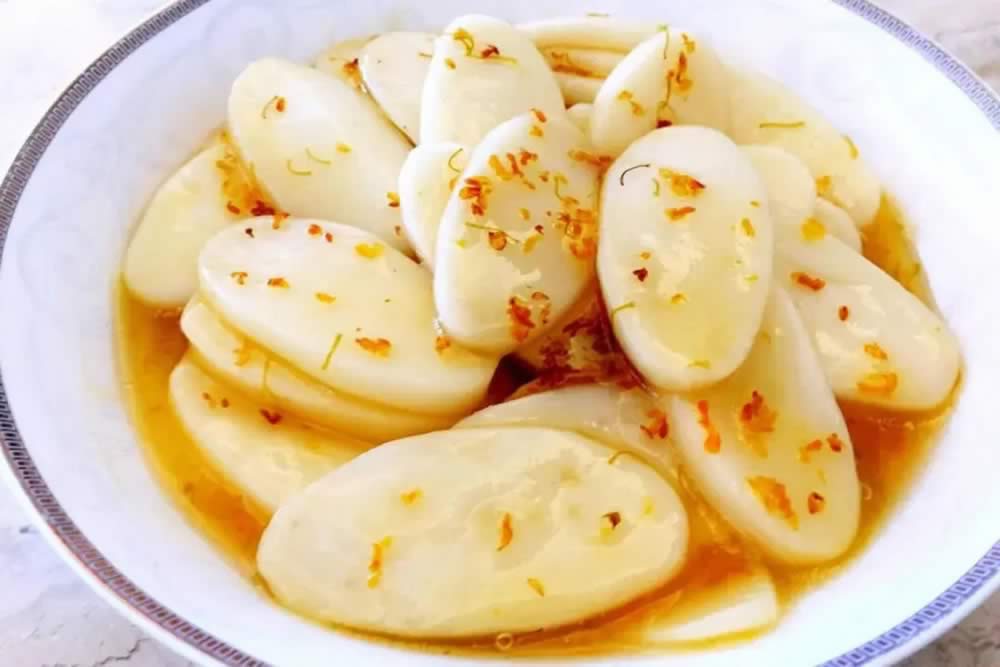
Autumn’s Fragrance: Chewy rice cakes stir-fried with osmanthus flowers and brown sugar.
Cultural Rhythm: Eaten during Mid-Autumn Festival, symbolizing sweetness and reunion.
Why Zhejiang Cuisine Captivates
Zhejiang chefs are culinary poets—transforming West Lake’s mist, Shaoxing’s rice fields, and Hangzhou’s tea hills into edible art. Unlike Sichuan’s boldness or Shandong’s richness, Zhejiang whispers through 清鲜雅淡 (qīng xiān yǎ dàn – purity, freshness, and understated elegance). Each dish is a brushstroke in Jiangnan’s watercolor landscape.
 Chinatodo
Chinatodo
